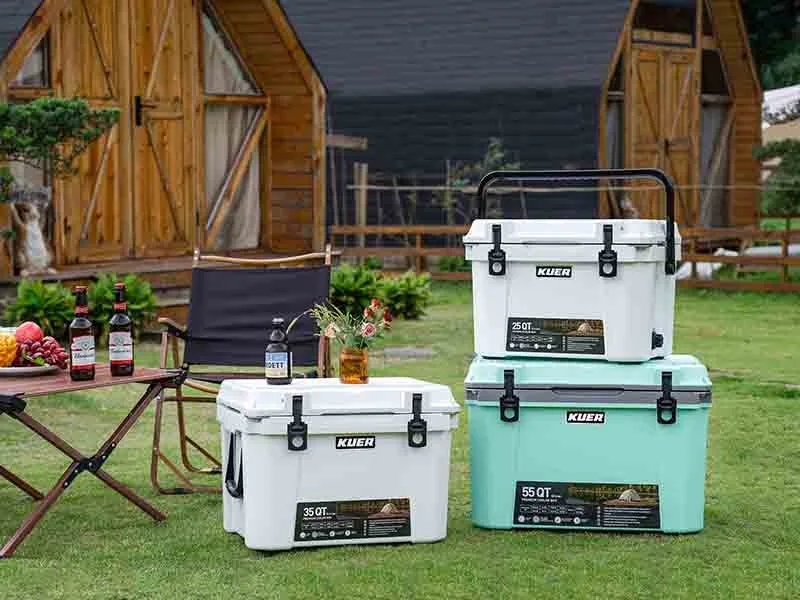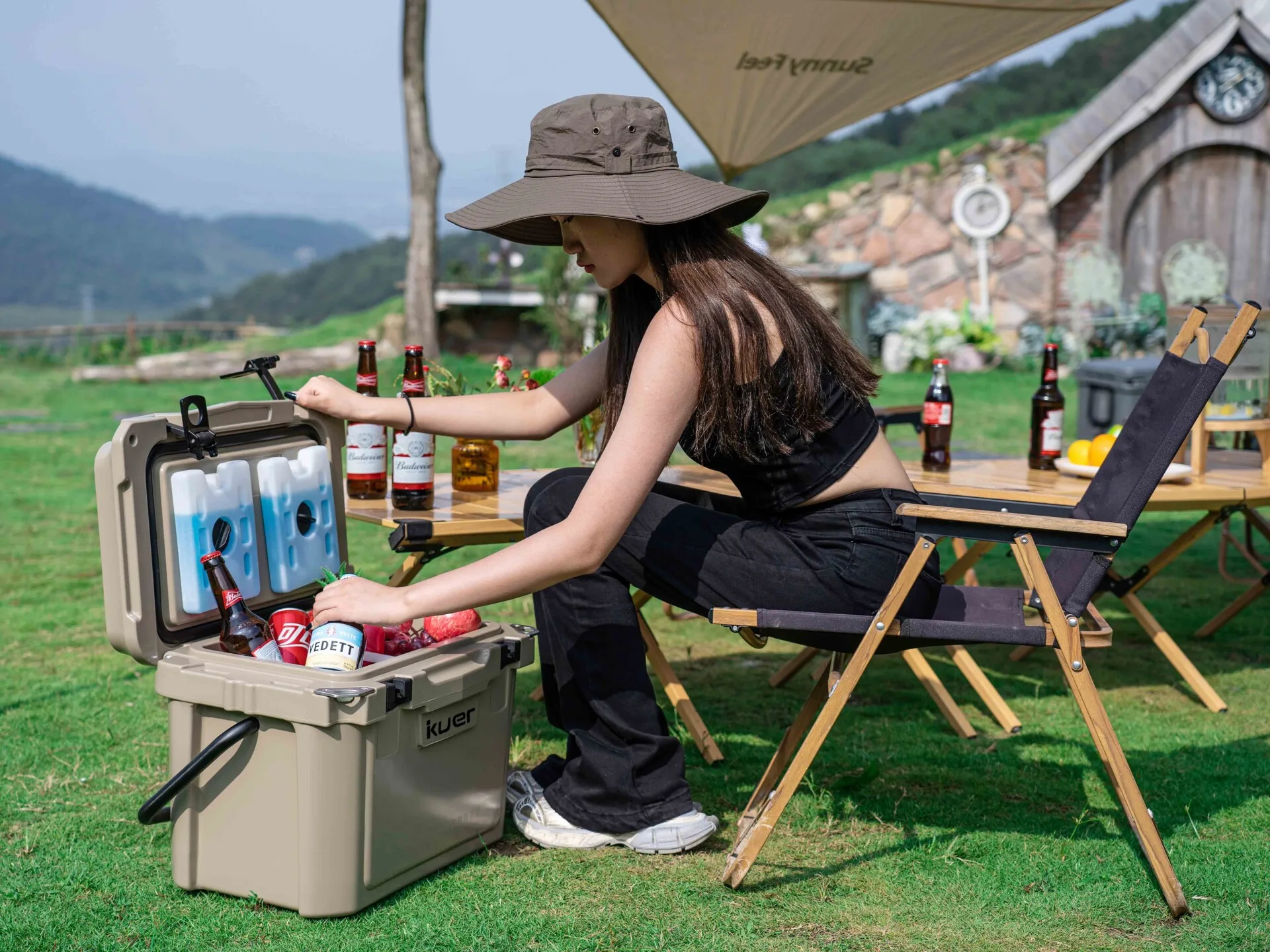
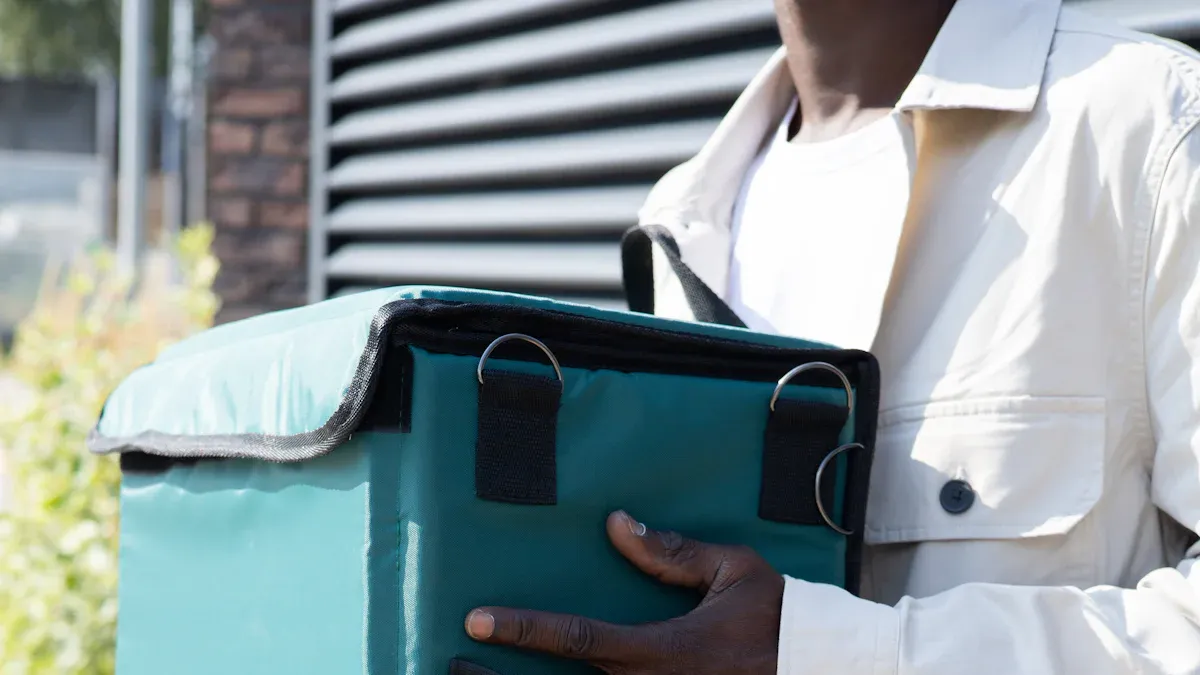
Have you ever opened your lunch, expecting a crisp, cold meal, only to find it disappointingly warm? You can keep your lunch box cool and ensure its freshness. The secret to a perfectly chilled and safe lunch lies in three key areas.
The Three Secrets to a Safe Lunch:
- Superior insulation in your insulated container.
- Strategic packing methods.
- Pre-chilling your insulated gear.
This guide gives you simple steps to master temperature control. You will gain the power to control your food’s temperature and keep it safe. Excellent insulation is your first line of defense.
Understanding Insulation Technology
Your lunch box’s ability to stay cool starts with its insulation. Insulation works by slowing down heat transfer. Heat moves in three ways: conduction (through touch), convection (through air or liquid movement), and radiation (through waves). Good insulation stops these processes. This keeps the cold inside and the hot air out.
Soft-Sided vs. Hard-Sided
You have two main choices: soft bags or hard boxes. Soft-sided bags are lightweight and easy to carry. They often use foam insulation. This type of insulation can keep food cool for up to 6-12 hours. Hard-sided coolers offer much better insulation. Premium models use a process called rotomolding. This creates a seamless, thick-walled container filled with high-quality insulation.
Industry Leader Example: KUER KUER Group is a prime example of excellence in this area. With 22 advanced rotomolding machines and an R&D team holding over 50 patents, their process proves a commitment to top-tier quality and performance in insulation.
The Role of a Perfect Seal
A great insulated lunch box is useless without a perfect seal. Gaskets, usually made of rubber or silicone, create an airtight barrier around the lid. This seal stops hot air from getting in and cold air from getting out. This process prevents heat transfer through convection. Secure latches press the lid down, ensuring the seal is tight and effective all day long.
Double Walled Lunch Box Explained
The best technology for personal lunch containers is double walled insulation. A double walled lunch box has an inner wall and an outer wall. The air between these walls is removed to create a vacuum. This vacuum is the key to amazing insulation. Since there are almost no air molecules in the vacuum, heat has no way to move between the walls. This stops both conduction and convection, keeping your food hot or cold for hours. A double walled lunch box provides superior performance. The double walled insulation in a double walled lunch box is highly effective. You will find that a double walled lunch box maintains temperature very well.
Comparing Double Walled Lunch Boxes
When you compare different types, the advantages of double walled lunch boxes become clear. While a basic insulated bag keeps things cool for a few hours, double walled lunch boxes can keep contents hot or cold significantly longer. The double walled insulation technology is simply more powerful. Many double walled lunch boxes are also made of durable stainless steel. A quality double walled lunch box is an investment in better meals. The advantages of double walled lunch boxes include superior temperature retention and durability. For truly hot or cold lunches, you need a double walled lunch box. These insulated double walled lunch boxes are the top choice. A double walled lunch box is your best defense against a lukewarm lunch.
Choosing the Right Lunch Box
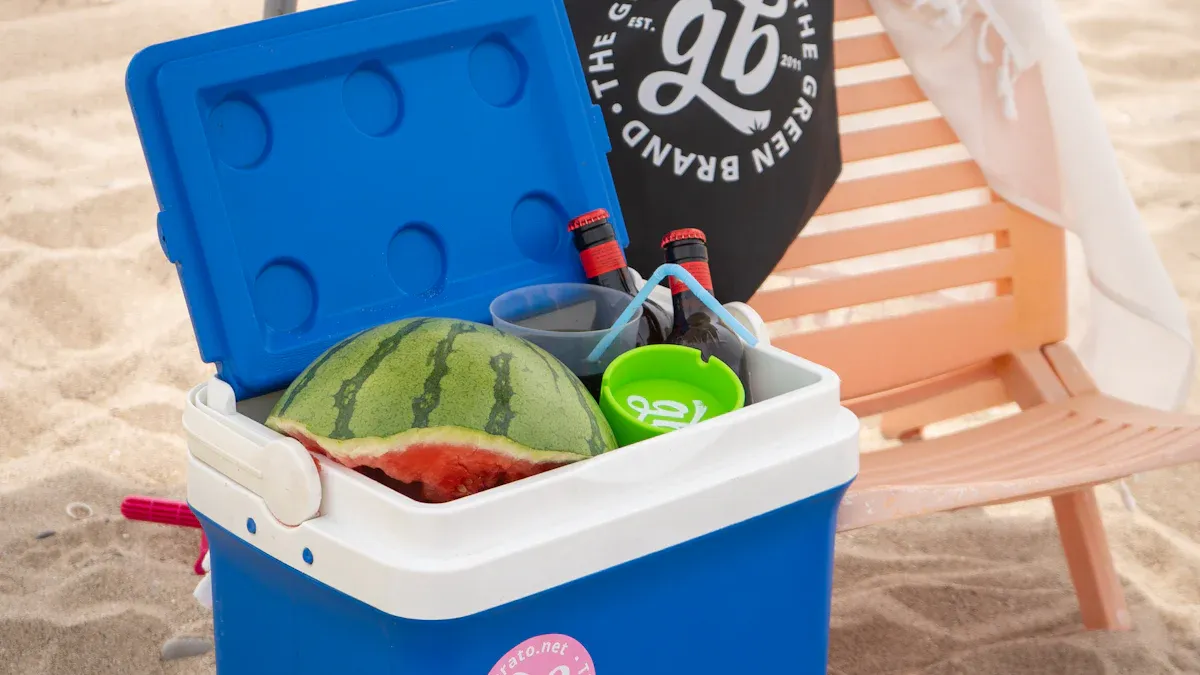
After understanding insulation, you can select the right container for your needs. The best lunch boxes combine excellent insulation with the right size, material, and durability for your lifestyle. This choice is critical for keeping your food safe and fresh.
Matching Size to Your Meal
You must match the lunch box size to your meal. A container that is too large has excess air space. This extra air warms up quickly and makes the insulation work harder. A lunch box that is the right size for your food portions will stay colder longer. Consider the typical size of your lunch when you shop.
Tip: For maximum cooling efficiency, you want your packed food and ice packs to fill at least two-thirds of the lunch box volume. A smaller size is often better if you pack light.
To help you choose the right size, look at the capacity of different models, usually measured in liters or quarts. A larger size does not always mean better performance if it’s mostly empty.
| Lunch Box Model | Capacity |
|---|---|
| Umami Bento Box Adult Lunch Box with Utensils | 1.2 Liters |
| Stanley Classic 10qt Lunch Box | 10 Quarts |
| Vera Bradley Women’s Cotton Deluxe Bunch Lunch Bag | 6 Liters |
| Mr. Dakai Thermal Adult Bento Box with Bag | 2.1 Liters |
| Maelstrom Insulated Lunch Bag | 15 Liters |
| Bentoheaven Premium Japanese Lunch/ Bento Box | 1.2 Liters |
This chart shows how much the size can vary between different styles.
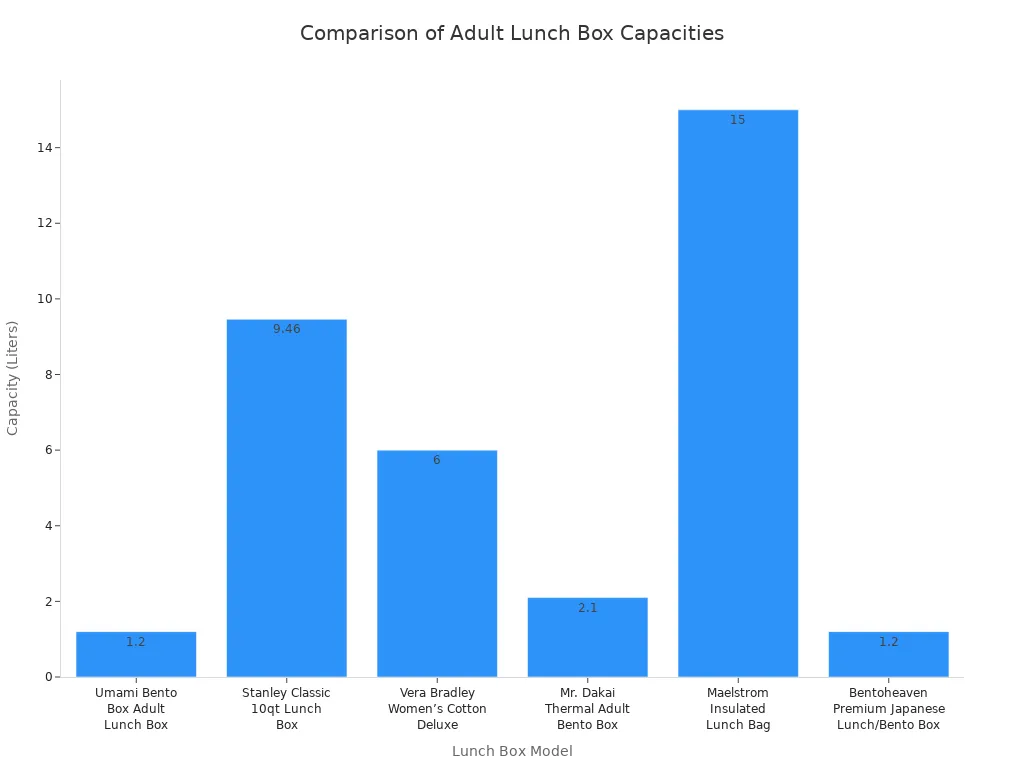
Choosing the correct size is your first step toward a perfectly chilled meal.
Material and Durability
The materials for double walled lunch boxes and soft bags determine their durability and insulation performance.
- Soft-Sided Bags: These are often made from fabrics like polyester or canvas. The durability of the fabric is measured in denier. A higher denier number means a thicker, stronger fabric. For example, many quality bags use 600 denier polyester for a good balance of toughness and weight.
| Fabric Type | Denier Rating |
|---|---|
| 600 denier polyester canvas | 600 |
- Hard-Sided Boxes: These offer superior durability. The best materials for double walled lunch boxes are often food-grade stainless steel. This material resists rust, stains, and odors. A stainless steel double walled lunch box provides excellent insulation and can withstand daily drops and bumps. Many high-performance double walled lunch boxes use this construction. A double walled lunch box made this way is a long-term investment.
Assessing Overall Toughness
Overall toughness goes beyond the main material. You should inspect the small parts, as these are common points of failure.
- Hinges
- Latches
- Handles
On lower-end coolers, these components are often made of less rigid plastic that can bend or break under constant use. For soft bags, check for sturdy zippers and reinforced stitching.
For the ultimate proof of toughness in hard coolers, you can look for a special certification.
Gold Standard of Toughness: Bear-Resistant Certification The Interagency Grizzly Bear Committee (IGBC) certifies products that can withstand attempts by grizzly bears to open them. To earn this, a product must pass a live bear test or a rigorous technical evaluation. This certification proves the cooler has incredible build quality and secure latches, making it one of the best lunch boxes available. It is a true sign of high-quality construction. The best lunch boxes often carry this rating.
A well-built double walled lunch box will have strong, reliable components. The quality of these parts is just as important as the insulation.
Portability and Weight
Finally, you need to consider how you will carry your lunch box. There is often a trade-off between performance and portability. A large, rotomolded cooler or a heavy-duty double walled lunch box offers the best insulation but can be heavy. If you drive to work, weight may not be an issue. However, if you walk, bike, or use public transit, a lighter insulated bag or a more compact double walled lunch box might be a better choice.
Think about your daily routine. The perfect double walled lunch box for a construction worker is different from one for an office worker. Many insulated double walled lunch boxes offer a great balance of weight and performance. The size and material of double walled lunch boxes will affect their weight. Choose a double walled lunch box that fits your strength and commute. The best insulated double walled lunch boxes are the ones you can comfortably carry every day. These insulated double walled lunch boxes will serve you well. Remember that better insulation often means more weight, so find the right balance for you among the many double walled lunch boxes on the market.
How to Keep Your Lunch Box Cool
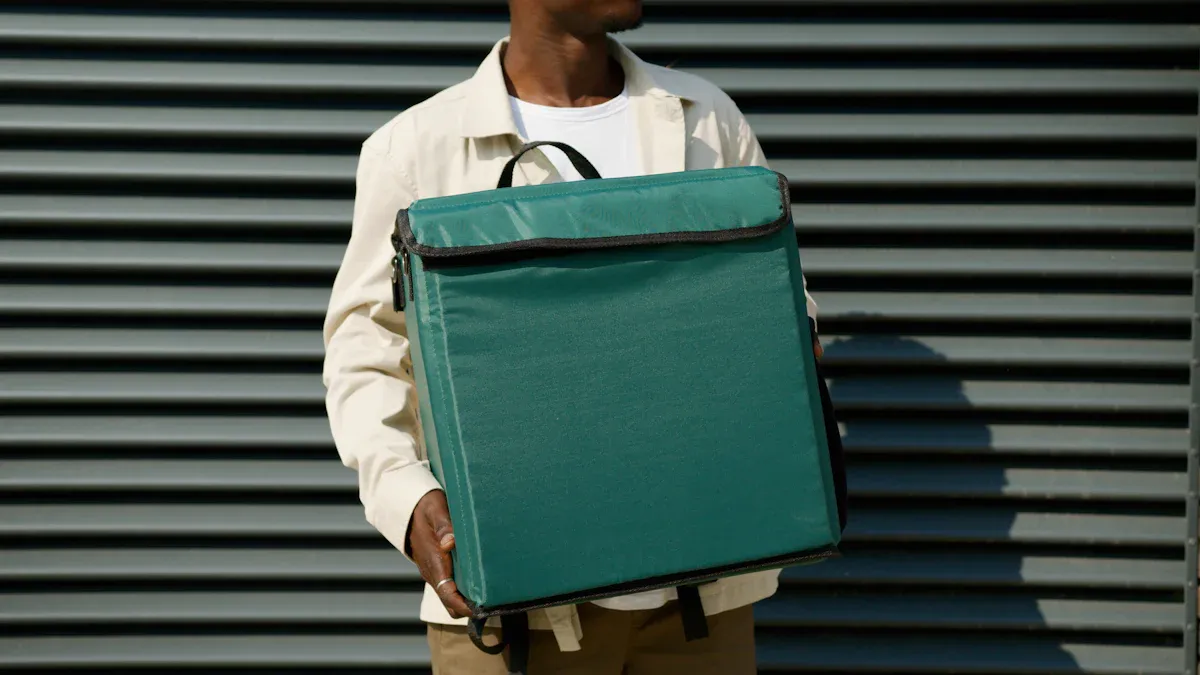
You have the right gear. Now you need the right strategy. Knowing how to pack your lunch box is just as important as the box itself. You can master temperature control with a few simple techniques. These steps will keep your lunch box cool, fresh, and safe to eat.
The Critical Pre-Chill Rule
You must never put cold food into a room-temperature lunch box. A warm container will immediately start to warm up your food and melt your ice packs. You can avoid this with a simple rule: pre-chill everything.
For the best results, you should place your empty lunch box or soft bag in the refrigerator overnight. This brings the container’s core temperature down. You should also chill all your food and drinks in the refrigerator before packing. Starting with everything cold gives you a major advantage in the battle against heat. Room temperature items will ruin your efforts to keep things cold.
Using Ice Packs Strategically
Ice packs are your primary weapon for maintaining a cold temperature. However, not all ice packs are created equal. You have two main types: gel-based packs and solid-block packs. Their performance differs significantly. Gel packs offer longer, more consistent cooling, while solid blocks can be less efficient.
Tip: Gel packs are often flexible, which allows you to wrap them around containers. This provides more even cooling and eliminates hot spots.
This table shows you the key differences.
| Feature | Gel-based Ice Packs | Solid-block Ice Packs (Water) |
|---|---|---|
| Thermal Performance | Lower thermal conductivity allows them to stay cold longer. | High thermal conductivity means they warm up faster. |
| Freezing Properties | They freeze at specific temperatures to maintain cold longer. | They freeze at 32°F (0°C) and lose cooling power quickly after melting. |
| Flexibility | They stay flexible when frozen, fitting around items for better contact. | They become a rigid, solid block, which can create air gaps. |
Choosing the right ice pack gives you better control over the internal temperature of your lunch box.
Layering for Lasting Cold
Proper packing creates a micro-environment that stays cold for hours. The secret is layering. Since cold air sinks, your packing strategy should use this principle to your advantage. You can create layers of cold that protect your food all day.
Follow these steps for optimal packing:
- Start with a solid or gel ice pack at the very bottom.
- Place your most perishable items, like meat or dairy, on top of that first ice pack. This is the coldest zone.
- Add another layer of ice packs.
- Continue alternating food and ice packs. You should place items you will eat last toward the bottom.
- Put your most delicate foods, like salads or sandwiches, on the very top to prevent them from getting crushed or too cold.
- Finish with one last ice pack on top before you close the lid. This traps the cold air inside.
This method works for both cold food and hot food. For hot food, you would use a hot pack at the bottom and top to trap heat.
Maintaining a Safe Food Temperature
The main goal of keeping your lunch cold is food safety. Bacteria grow rapidly in the “temperature danger zone,” which is between 40°F (4°C) and 140°F (60°C). Your goal is to keep your cold food below this range.
The Food Safety Rules You Must Know
- Safe Temperature: The FDA requires you to keep perishable foods at or below 41°F (5°C) to keep them safe.
- Time Limit: You must discard any perishable food left in the danger zone for two hours or more. If the outside temperature is 90°F or hotter, you must discard the food after just one hour.
Using a well-insulated lunch box with proper packing helps you maintain a safe temperature. This gives you total control over your food’s safety. Following these rules ensures your meal is not just fresh but also completely safe to eat.
Achieving Optimal Temperature Control
You can achieve perfect temperature control with a few advanced habits. These final steps ensure your insulated double walled lunch box performs at its peak. You gain complete control over your meal’s freshness and ease of packing. These methods help you keep your lunch box cool all day.
Using Cold, Airtight Containers
Your food containers play a big role. You should always use cold, airtight containers for your cold food. A room-temperature container will absorb the cold from your food. This causes a rapid temperature drop. Pre-chilling your insulated double walled lunch box and containers prevents this. This simple step enhances the performance of your insulated double walled lunch box. It helps maintain a stable, safe temperature for longer. A quality double walled lunch box provides the best foundation for this control.
Minimizing Air Exchange
You must keep your insulated double walled lunch box closed until lunchtime. Every time you open the lid, cold air escapes and warm air enters. This exchange forces your insulated double walled lunch box to work harder to maintain a cold temperature. Keeping it sealed traps the cold air inside. This simple discipline is key to maximizing the freshness of your meal. It is an easy way to help your double walled lunch box maintain the correct temperature.
Cleaning for Performance
Proper cleaning is essential for performance and safety. Food spills and moisture can break down insulated materials over time. This weakens temperature control and creates odors. You can maintain your double walled lunch box with ease.
Safe Cleaning for Your Insulated Gear
- Use a soft sponge with mild dish soap and warm water.
- Create a baking soda paste to gently lift stains and odors.
- Wipe the interior with a 50/50 white vinegar and water mix to disinfect.
- Always air dry your double walled lunch box completely to prevent mold.
These gentle methods keep your insulated double walled lunch box safe and effective. Regular cleaning ensures your double walled lunch box provides freshness and ease for years.
Packing for a Full Day
For a full day, your packing strategy is crucial. A high-performance double walled lunch box is your best tool for all-day temperature control. These insulated double walled lunch boxes are designed for extended hot or cold retention. Whether you are packing hot food or keeping items cold, these double walled lunch boxes provide a safe environment. Following these steps will keep your lunch box cool and your food safe from morning to mealtime. The right packing in the best double walled lunch boxes guarantees a perfect meal.
You now understand the secrets to a perfectly cold and safe meal. Your success depends on three things: choosing quality insulation, using smart packing methods, and pre-chilling your gear. Following these steps keeps your food cold and safe. A well-chosen container with great insulation ensures your food is always safe to eat. This knowledge guarantees your lunch is safe.
You have the power to enjoy a safe meal with total freshness every day. Your lunch is now safe.
Investing in a high-performance lunch box is an investment in better, safe meals, providing both freshness and ease.
FAQ
How long can food stay safe in my lunch box?
Your food’s safety depends on temperature. You must keep perishable food at or below 41°F (5°C). If the temperature enters the “danger zone” (above 41°F), you should discard the food after two hours. A quality lunch box helps you maintain a safe temperature.
Is it better to use real ice or ice packs?
You should use gel-based ice packs. They stay cold longer than ice and do not create a watery mess as they thaw. Their flexible shape also provides better surface contact with your food containers, ensuring more even and effective cooling throughout the day.
How do I get rid of bad smells in my lunch box?
You can easily remove odors. First, wash the interior with mild soap and water. For tough smells, wipe it down with a mix of equal parts white vinegar and water. Always let your double walled lunch box air dry completely with the lid open.
Cleaning Tip 💡 A paste made from baking soda and water is also excellent for scrubbing away stubborn stains and absorbing lingering odors.
How long will a quality lunch box last?
A high-performance lunch box can last for many years with proper care. The lifespan of a double walled lunch box often depends on the quality of its hinges, latches, and seals. You should inspect these parts regularly and clean the container after each use.


